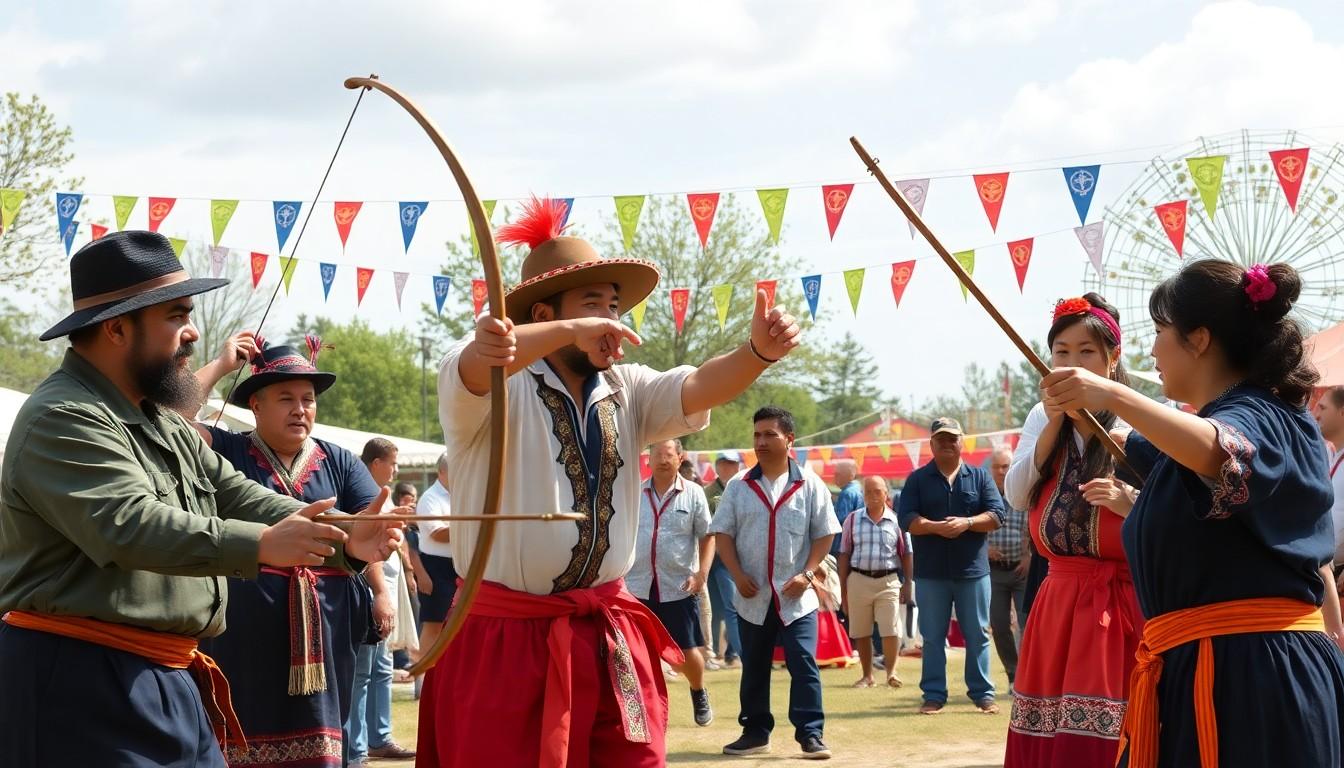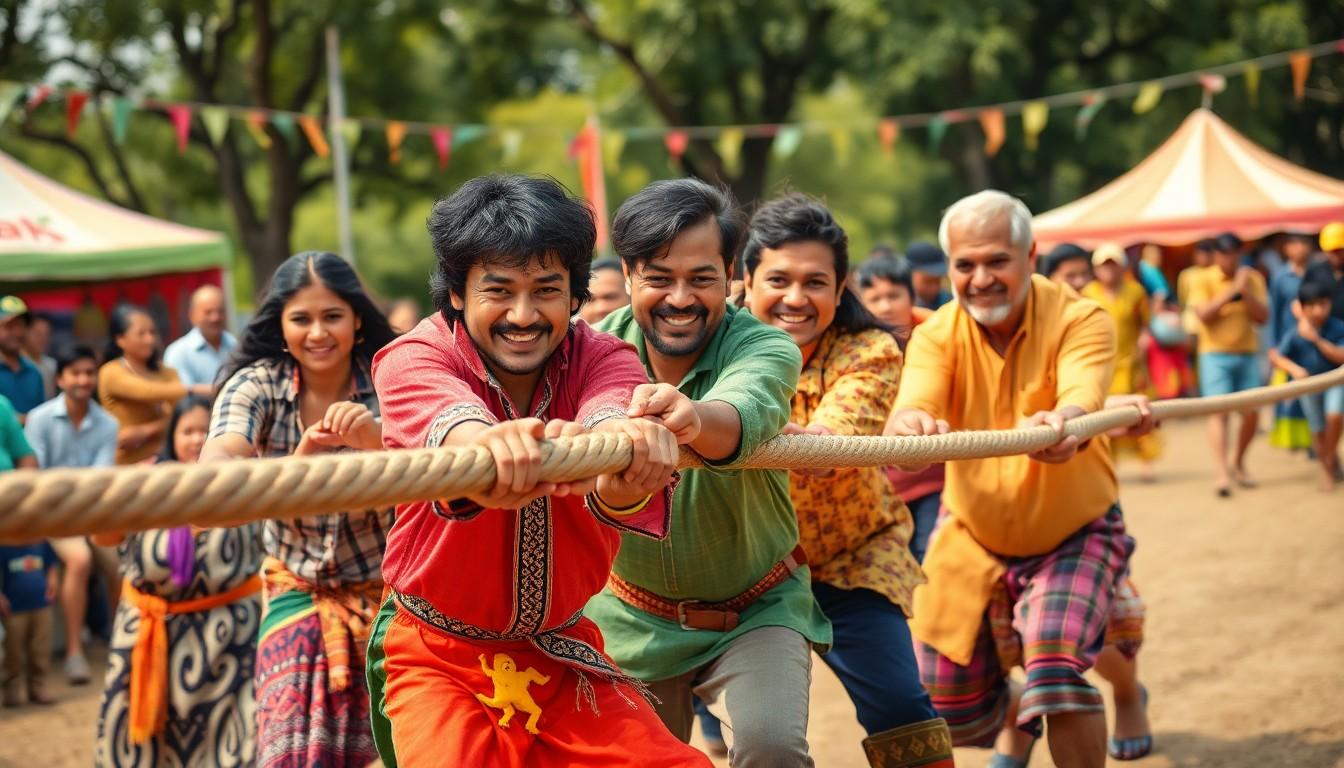Folk culture sports are like that quirky uncle at family gatherings—unexpected yet unforgettable. These vibrant activities, rooted in tradition, showcase the heart and soul of communities worldwide. From the spirited tug-of-war contests in rural villages to the breathtaking displays of skill in traditional archery, these sports offer a delightful glimpse into the customs that bind people together.
Folk Culture Sports
Folk culture sports embody unique traditions that highlight the local customs and community bonds of various regions. Many activities celebrate cultural heritage through engaging physical competitions. For instance, tug-of-war contests reflect teamwork and cooperative spirit, often organized during festivals or community gatherings.
Traditional archery represents another fascinating aspect of folk culture sports, showcasing skills passed down through generations. Participants often use handmade bows and arrows, emphasizing craftsmanship and history. Regions may host archery competitions that attract both locals and visitors, further promoting cultural exchange.
Many folk culture sports feature elaborate rituals and attire, enhancing the overall experience. Competitors often wear traditional clothing that signifies their cultural identity. This practice reinforces pride in heritage and creates a visually stunning backdrop for events.
Regional variations add diversity to folk culture sports. For example, some cultures engage in unique forms of wrestling that emphasize agility and strategy. Each variant offers insight into the values and social practices of the community.
Engagement in these sports fosters a sense of belonging within communities. Participants of all ages come together to celebrate their heritage while honing physical skills. Folk culture sports serve as a vibrant medium for expressing cultural identity, providing both enjoyment and education to those involved.
Involvement in such activities often strengthens interpersonal relationships and community ties. Families and friends unite through shared experiences, creating lasting memories. Thus, folk culture sports not only preserve traditions but also invigorate societies by promoting unity and collaboration.
Historical Context

Folk culture sports have deep historical roots, reflecting the customs and values of societies. These activities often emerge from everyday life and local traditions.
Origin of Folk Culture Sports
Origins trace back to ancient practices that emphasized survival skills. Communities developed games to showcase strength, agility, and endurance. For instance, archery contests originated from hunting necessity, while wrestling forms evolved from combat training. These early competitions not only fostered camaraderie but also created a sense of identity among participants. Shared experiences in these sports often bound people together.
Evolution Over Time
Over time, folk culture sports adapted to changing societal norms and influences. Traditional games, once solely community-based events, gained recognition in regional festivals. Cultural exchange introduced new elements to existing sports, enhancing their complexity and appeal. The incorporation of rituals and traditional attire became more pronounced, emphasizing the significance of heritage. Mass media and globalization further influenced these sports, making them accessible to broader audiences. Despite these changes, the essence of community spirit remains integral.
Popular Folk Culture Sports Around the World
Folk culture sports reflect the rich traditions of communities globally. These activities engage participants and reinforce social bonds.
Traditional Games in Europe
Traditional games highlight the cultural diversity of Europe. In Scotland, caber tossing showcases strength and precision. Participants flip a tall log end over end, demonstrating skill. Spain boasts a unique sport called pelota, where players strike a ball against a wall using a racket. As a result, contests blend athleticism with local customs. Germany features a competitive game called Eierlauf, where players race while balancing eggs on spoons. Such games not only entertain but also connect communities to their heritage.
Unique Sports in Asia
Asia presents a variety of unique sports steeped in tradition. In Japan, sumo wrestling signifies both sport and cultural ritual. Wrestlers engage in a series of intricate moves while wearing traditional attire. Kabaddi, originating from India, combines physical strength and strategy as teams aim to tag opponents while holding their breath. In Thailand, Muay Thai not only acts as a combat sport but embodies centuries of tradition and discipline. Each sport conveys ancient customs, enriching the cultural tapestry of the region.
Indigenous Games in the Americas
Indigenous games in the Americas serve as vital expressions of heritage. The Inuit sport of blanket toss represents skill, with participants jumping on a large blanket for height and agility. From the Amazon rainforest, the traditional game of ulama involves a ball made from rubber, offering insight into historical practices. In North America, lacrosse evolved from indigenous rituals, promoting teamwork and strategy. Each game showcases both athletic prowess and cultural narratives, preserving the legacy of indigenous peoples.
The Role of Folk Culture Sports in Community
Folk culture sports play a significant role in enhancing community ties. These activities foster interaction among participants, creating a stronger sense of belonging.
Social Benefits
Social benefits of folk culture sports are profound. They provide platforms for community members to connect, bonding over shared experiences. Participation in these activities often leads to stronger friendships and increased social cohesion. Events featuring traditional sports can draw diverse groups together, promoting inclusivity. Intergenerational interactions occur frequently, as older individuals teach younger participants, preserving cultural knowledge. Active involvement in folk sports nurtures pride in local identity, bolstering communal spirit.
Economic Impact
Economic impact of folk culture sports also deserves attention. Local festivals centered around these sports often attract tourists, boosting regional economies. Increased visitors lead to higher sales for local businesses including food vendors and artisans. Cultural events also create job opportunities and enhance community profiles. Hosting competitions often involves collaboration with sponsors who add resources to improve organization and outreach. Investment in folk culture sports supports sustainable development, ensuring cultural heritage remains economically viable.
Challenges Facing Folk Culture Sports
Folk culture sports face significant challenges in today’s rapidly evolving world. These challenges often stem from modernization and globalization, which can dilute traditional practices.
Modernization and Globalization
Modernization leads to the increasing popularity of fast-paced sports and entertainment, overshadowing folk culture sports. Many youth gravitate toward widely recognized sports, reducing participation in local traditions. Globalization facilitates the spread of these popular sports, shifting community priorities. Furthermore, cultural homogenization threatens the uniqueness of regional customs, making it difficult for folk sports to thrive. The appeal of technology and urban lifestyles contributes to a decline in traditional practices. Communities struggle to maintain participation in these events as societal focus drifts towards contemporary forms of entertainment.
Preservation Efforts
Preservation efforts play a crucial role in countering the decline of folk culture sports. Local organizations actively promote these sports through festivals and community events. Partnerships between cultural institutions and schools encourage youth involvement, fostering interest in their heritage. Documentation of traditional sports practices ensures that knowledge is passed down through generations. Government support can enhance visibility and sustainability, aiding in revitalization efforts. These initiatives help rekindle community pride and strengthen social ties. Collaborations with local artisans also promote traditional attire, reinforcing cultural identity in sporting contexts.
Folk culture sports play an essential role in preserving traditions and fostering community spirit. They offer a unique glimpse into the customs that define various cultures while promoting social bonds among participants. As these activities adapt to contemporary challenges, their significance remains unwavering.
Through local festivals and community events, folk sports not only enhance cultural identity but also contribute to economic growth. The ongoing efforts to engage youth and promote inclusivity ensure that these vibrant traditions continue to thrive. By embracing and celebrating folk culture sports, communities can strengthen their connections to the past while paving the way for a united future.

